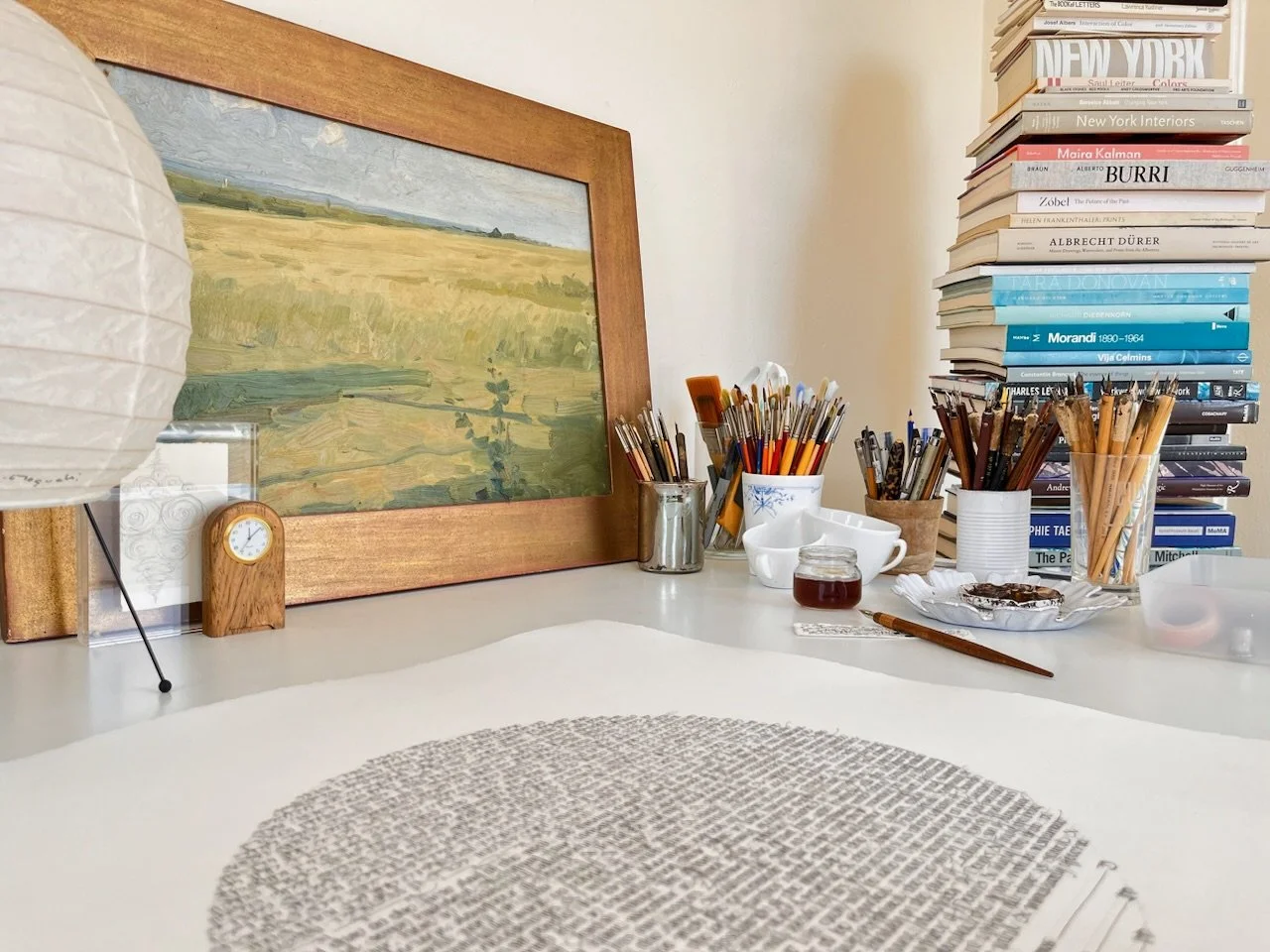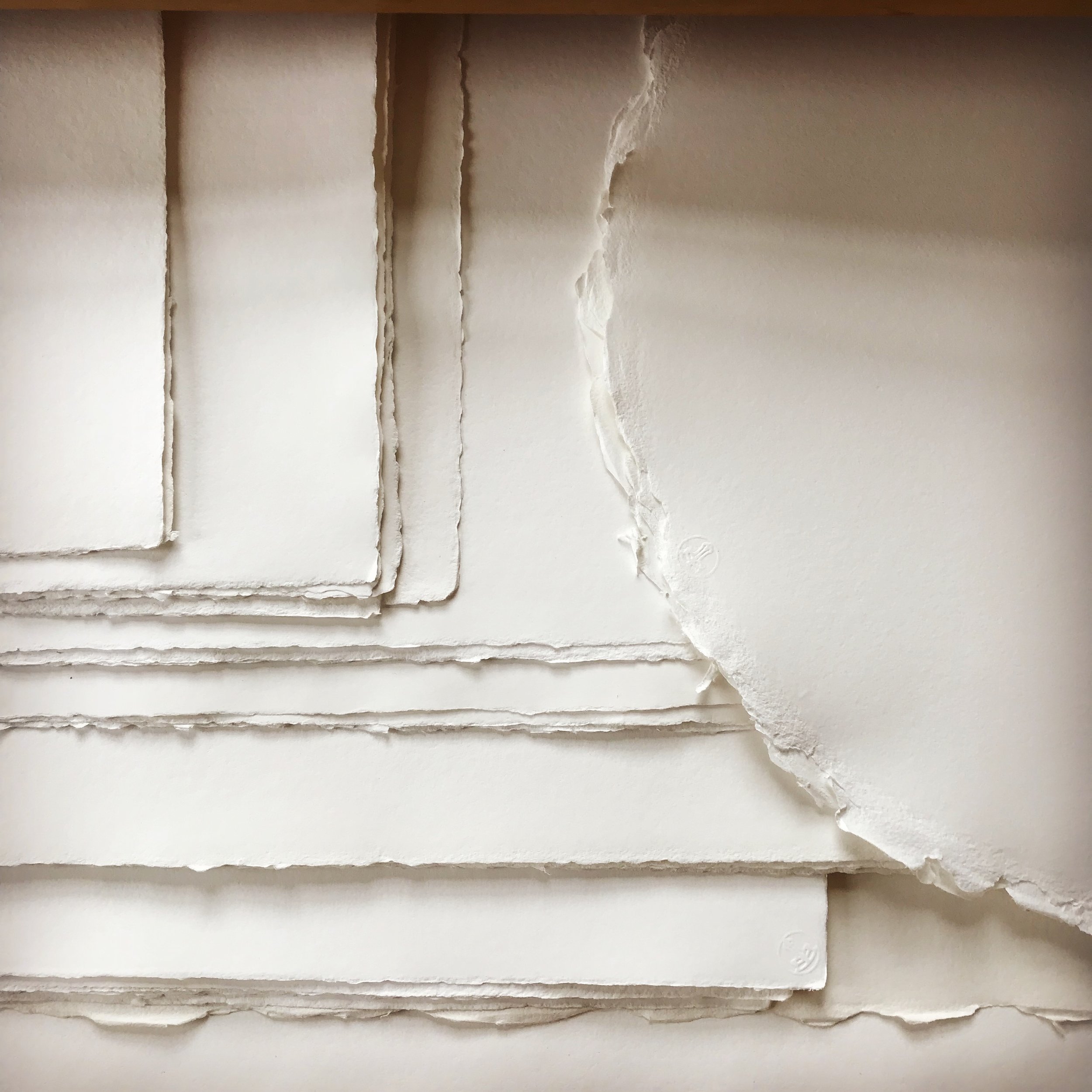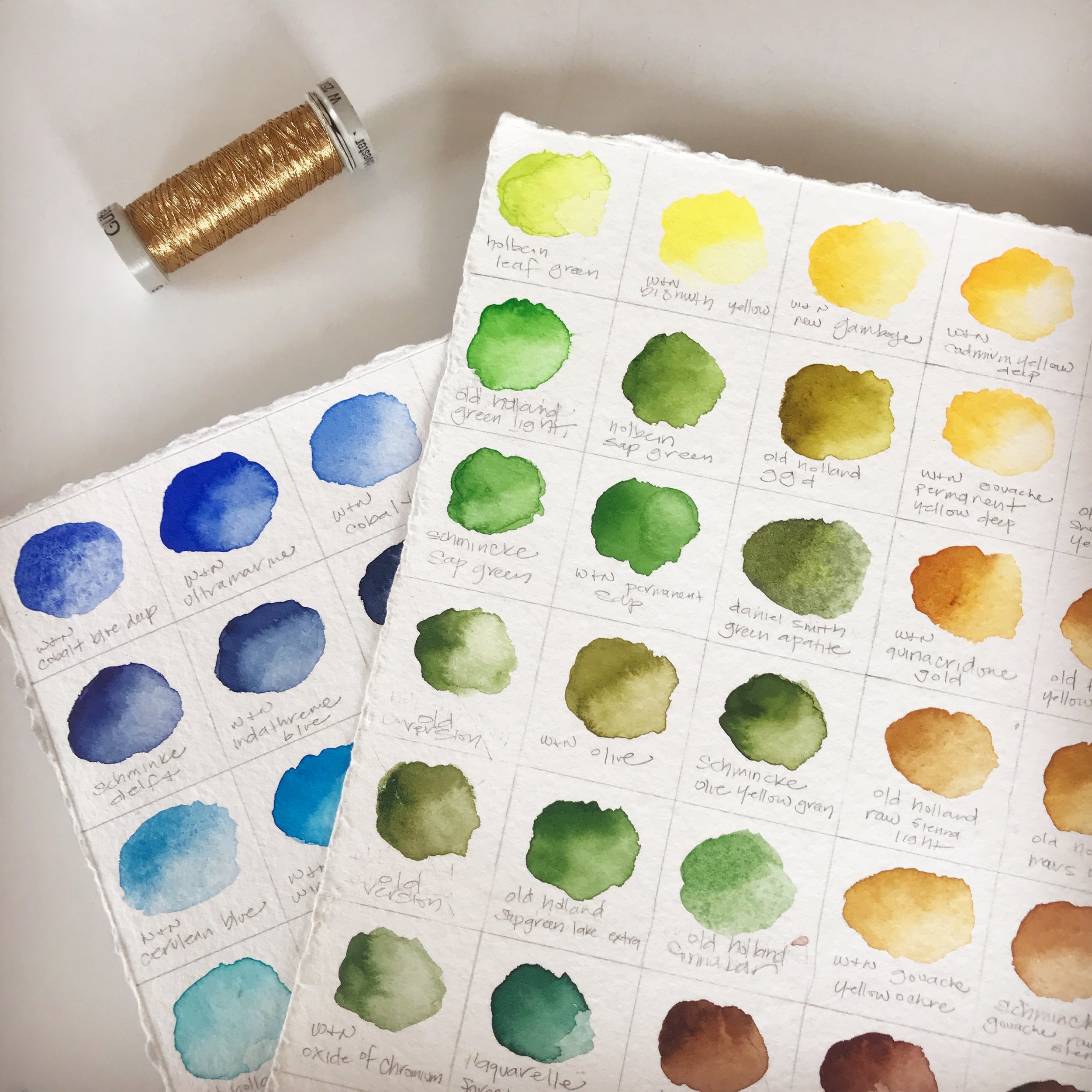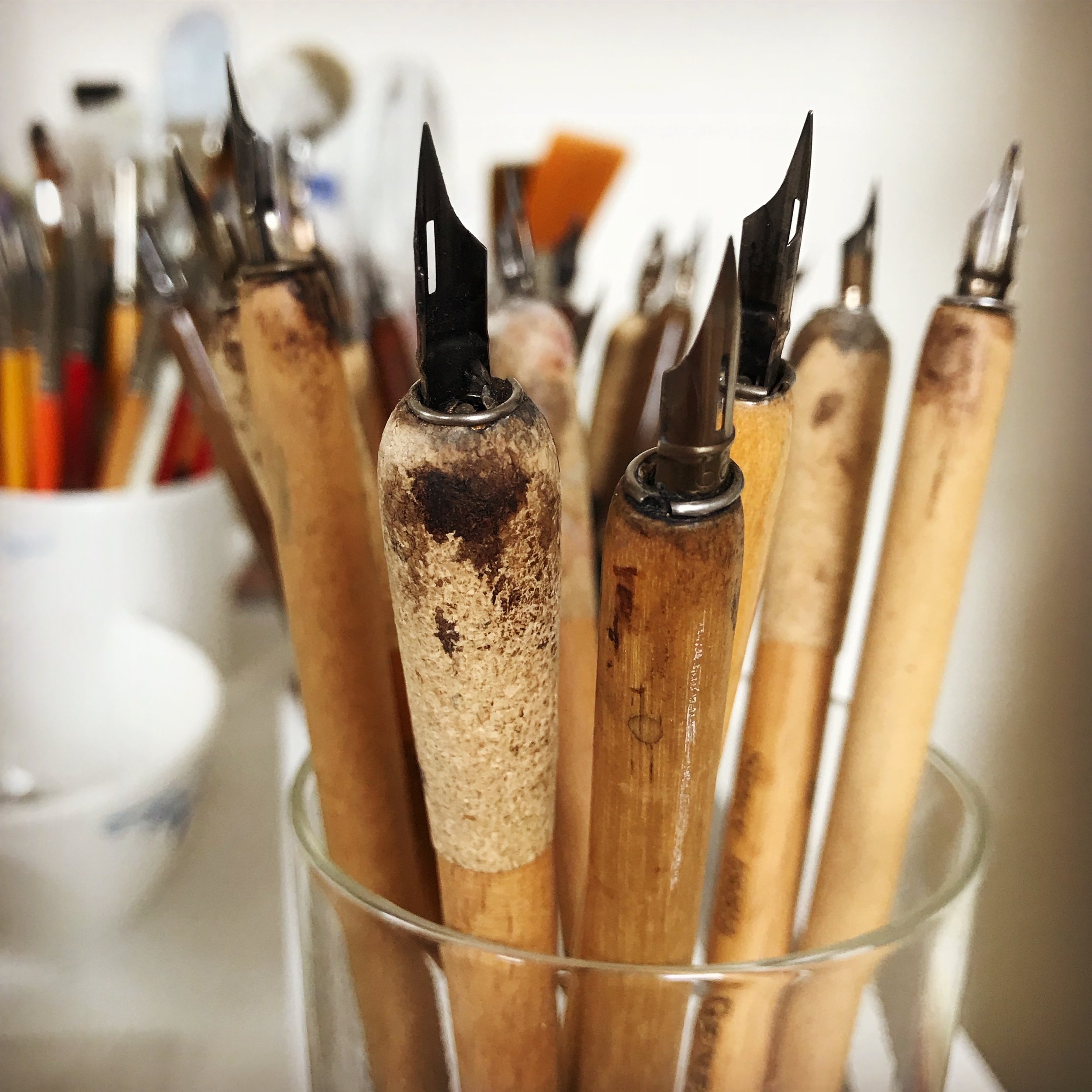
ABOUT
Stephanie Caplan, Ketubah Artist
HOW IT ALL STARTED
People always ask me how I started making ketubot. In 1994 a close friend of mine was getting married. I had been doing decorative furniture painting, she was having trouble finding a ketubah that she liked and she asked me to do one for her. I spent the summer teaching myself Hebrew calligraphy, ended up creating my own lettering and painted her a simple landscape as a border.
From there I decided that this could be something really fulfilling, a way to blend my artistry and love of jewish ritual, as well as seeing that there was a need for a truly modern ketubah for everyone. Part of the reason she couldn’t find a ketubah was that it was an interfaith marriage, and at the time there were very few people who would make an interfaith ketubah. I’ve been making ketubot since then, focusing on creating modern ketubot that are both art and ritual object, something for everyone to enjoy. I feel exceedingly lucky that I found something that i love to do and seem to be good at.
BACKGROUND
I grew up in Montreal, Canada and Newton, Massachusetts, going to Solomon Schechter day schools in each place. I went to Camp Ramah and spent my junior year of college in Jerusalem. I studied comparative religion and art history at Barnard College, so it’s not so surprising that the Judaism and art came together. Later I lived in London, studied weaving, textiles and calligraphy.
Calligraphy has become my main focus in the craft of making a ketubah and as one of the last people doing that, it feels even more special to do everything by hand.
INSPIRATION + NEW YORK CITY
My favorite artists tend to use just a few elements to create something that seems simple and quiet, and through that we see their talent: sculptors like Noguchi, and Brancusi, and painters, like Morandi and Rothko have the quiet space. Others that I love like Joan Mitchell and Cy Twombly, Rauschenberg and Frankenthaler have the color and energy to which I aspire. Lettering artists like Brody Neuenschwander and Massimo Polello, show me where lettering can go and photographers like Eggleston and Cartier-Bresson show me how space can change everything. I‘m inspired by everything from Japanese textiles and Eames chairs to trees and the ocean, and always by the architecture of New York.
I live and work in the east village of New York City. I love that I live and work in the same neighborhood where the yiddish culture thrived 100 years ago, and in a small way I‘m bringing it back… living in new York I get to go to all museums and galleries and draw on the modern style and creativity all around me.
Making Judaica allows me to bring a modern aesthetic to traditional objects, enhancing their use and connection to people. Enabling transformation through art, working with couples at a fantastic time in their lives to create something that will become their most treasured object… what could be better?





